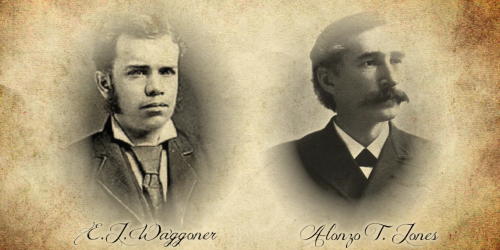
Spreading the “good news” or the “glad tidings” (as the King James Version puts it) was the task for the 1888 reformers after the close of the General Conference Session.
Ellen White left Minneapolis discouraged with the ministerial leadership of the denomination, but she still had hope in the Adventist people as a whole. Before the close of the conference, she had told the assembled ministers that if they would not accept the light, she wanted to “give the people a chance; perhaps they may receive it” (MS9, 1888). They certainly needed it. In September 1889 she would remark that “there is not one in one hundred” who really understood what it meant to be justified by faith, what it meant that “Christ should be . . . the only hope and salvation” (Review and Herald, Sept. 3, 1889).
Up through the fall of 1891 she, Jones and Waggoner had gone to England, Jones and W.W. Prescott continued to present the message in the United States. All through this period and beyond it, Ellen White emphasized that God had chosen Jones and Waggoner to bear a special message to the Adventist church, and she published widely on the topic of righteousness by faith herself.
The new General Conference administrations of O.A. Olsen (1888‒1897) and G.A. Irwin (1897‒1901) responded positively by giving Jones and Waggoner exposure throughout the 1890s. The two men had access to the people through the churches, the Sabbath school lessons, the colleges, the in-service schools regularly held for the ministry, and the denomination’s publishing houses.
Especially important was the fact that during each General Conference session from 1889 to 1897 Jones and Waggoner received the leading role in the study of the Bible and theology. Beyond that, Jones by 1897 had assumed the powerful position of Review and Herald editor.
It would have been hard to conceive of a program that could have given the reformers more prominence during the 1890s.
Truly the “glad tidings” were being taken to “the people.” And they still are. Christ is still the center attraction in biblically oriented Adventist preaching.
George R. Knight is a retired professor of Church History at the Adventist Theological Seminary at Andrews University. This article is from his book, Lest We Forget, a daily devotional, published by the Review and Herald Publishing Association, page 294.